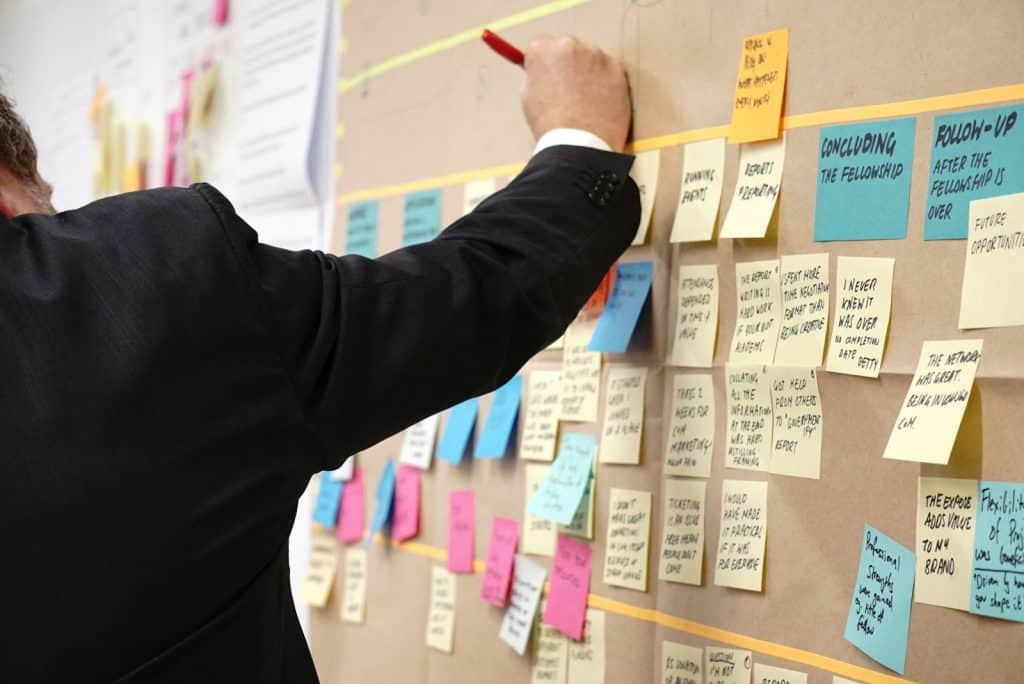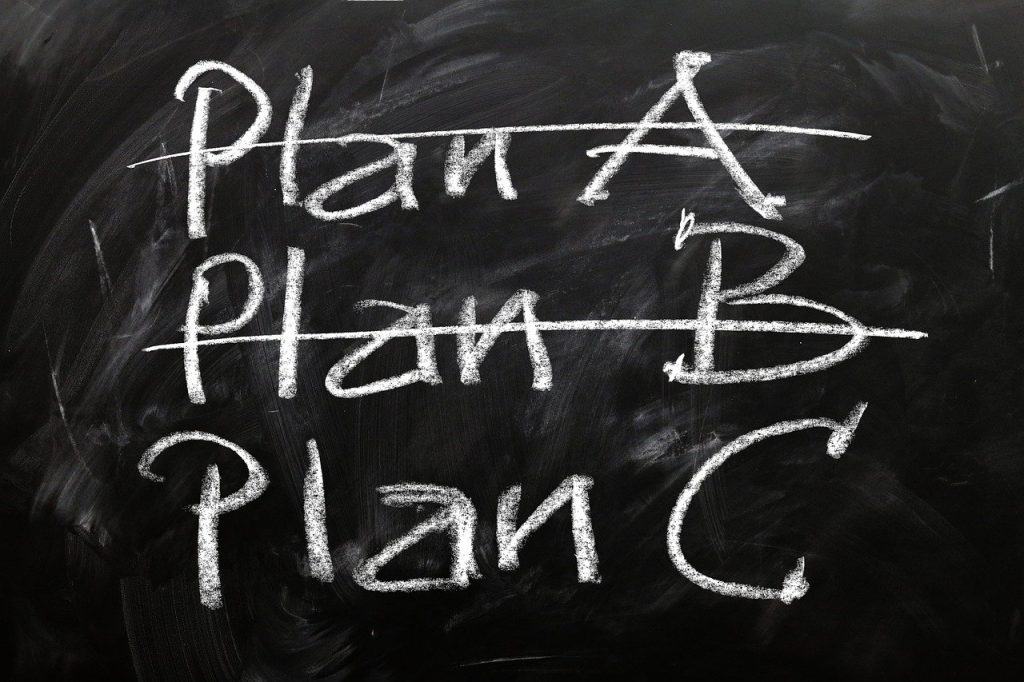I was working at a software startup that we faced a major challenges. The impact was deadlines were slipping and team morale hit rock bottom. We realized a change in our project management strategy was required. This led us to look into being more structured and ultimately looking at kanban vs Scrum.
When we looked into agile project management we uncovered two major frameworks: Kanban and Scrum. They were both Advertised for their ability to streamline workflow and enhance productivity.
We looked into the lean principles Supporting these frameworks. I’m eager to share our insights with you.
The Origins of Kanban and Scrum
Kanban and Scrum are two leading agile approaches. Kanban’s roots are in Toyota’s lean manufacturing from the 1940s. Taiichi Ohno a Toyota engineer created this method to enhance efficiency and cut waste in production.
The Kanban system relies on visual signals to manage workflow. Its effectiveness in the automotive sector paved the way for its use in software development. Here, teams apply lean principles to streamline their processes and deliver value more swiftly.
Scrum originated within the software development field. In 1986, Hirotaka Takeuchi and Ikujiro Nonaka introduced it in their paper “The New New Product Development Game.” They likened high-performing teams to the scrum formation in rugby.
Scrum was expanded by Jeff Sutherland and Ken Schwaber in the 1990s, making it more suitable for software development projects. Their goal was to develop a framework that could manage complex, unpredictable tasks while ensuring agility and adaptability to change.
Core Principles of Kanban
Kanban is built on several key principles. One key element is workflow visualization. This allows teams to track their work in real-time. This visual tool helps spot bottlenecks and streamline processes for better efficiency.
Limiting work in progress (WIP) is another vital part of Kanban. Teams set limits on tasks at each stage to avoid overloading. This aims to reduce waste and optimize resources.
Kanban uses regular review and adaptation. Teams examine their workflow, pinpoint areas for improvement and make incremental changes. This ongoing process keeps organizations agile and responsive to changing needs.
| Kanban Principle | Description | Benefit |
|---|---|---|
| Workflow Visualization | Use of visual boards to represent work stages | Improved transparency and communication |
| Limit Work in Progress | Set maximum tasks for each workflow stage | Reduced bottlenecks and increased efficiency |
| Manage Flow | Monitor and optimize work movement | Smoother operations and faster delivery |
| Continuous Improvement | Regular review and refinement of processes | Ongoing optimization and adaptability |
Fundamental Elements of Scrum

Scrum is a widely used framework in software development that boosts team Coordination and productivity. Scrum centers on repetitive development cycles called sprints. These cycles, lasting 1-4 weeks, enable teams to concentrate on specific goals and deliver software incrementally.
Daily stand-up meetings are vital to Scrum. These short, 15-minute sessions ensure the team stays on track and tackles any obstacles. Team members discuss their progress, plans and challenges, promoting open communication and swift problem-solving.
The product backlog is a important part of Scrum. It’s a list of features, enhancements, and fixes, prioritized to guide the team’s work. The Product Owner keeps this list updated, ensuring it aligns with the project’s most valuable items for success.
| Scrum Element | Description | Impact on Productivity |
|---|---|---|
| Sprints | 1-4 week development cycles | Focused work, regular deliverables |
| Daily Stand-ups | 15-minute team meetings | Improved communication, quick issue resolution |
| Product Backlog | Prioritized feature list | Clear direction, value-driven development |
Kanban vs Scrum: Key Differences in Workflow
Kanban and Scrum present different strategies for managing workflows. Kanban emphasizes visualizing work and capping work in progress. It employs a board to showcase tasks, moving them through stages as they advance. This approach facilitates a continuous flow and swiftly identifies bottlenecks.
Scrum, structures work into predetermined sprints. Teams pledge to finish a specific set of tasks within these sprints. The sprint backlog is important for prioritizing tasks and visualizing workflow. Daily stand-ups make sure everyone is aware about progress and challenges.
Let’s look at a comparison of these two frameworks:
| Aspect | Kanban | Scrum |
|---|---|---|
| Workflow | Continuous flow | Sprint-based |
| Task Prioritization | As needed | At sprint planning |
| Work Visualization | Kanban board | Sprint backlog |
| Work in Progress Limits | Explicit | Implicit (sprint capacity) |
| Flexibility | High | Moderate |
Both frameworks bring distinct advantages to project management. Kanban is ideal for projects needing flexibility and continuous delivery. Scrum excels in complex projects with defined milestones. The decision between them hinges on your team’s dynamics and project specifics.
Visual Management: Kanban Boards vs Scrum Boards

Kanban and Scrum boards are important for visualizing workflows and ensuring team collaboration. These tools aid in tracking progress, setting priorities, and optimizing work processes.
Kanban boards employ columns to depict various work stages. Tasks advance from left to right, illustrating workflow and pinpointing bottlenecks. Their flexibility, without predetermined time frames, makes them perfect for projects that flow continuously.
Scrum boards, are structured around time-boxed sprints. They feature columns for “To Do,” “In Progress,” and “Done.” Tasks are shifted across these columns during each sprint, offering a view of progress and task order.
| Feature | Kanban Board | Scrum Board |
|---|---|---|
| Time Frame | Continuous flow | Sprint-based |
| Columns | Customizable workflow stages | To Do, In Progress, Done |
| Task Limits | Work-in-progress limits | Sprint backlog |
| Flexibility | High | Moderate |
Kanban vs Scrum: Time Management
Kanban and Scrum differ in their approaches to managing time in project management. Kanban uses a continuous flow model, whereas Scrum uses time-boxed sprints.
Kanban’s workflow is continuous, with tasks moving through the system without interruption. Teams select tasks from a backlog based on their capacity, aiming to limit work in progress. This method excels in projects with shifting priorities or frequent interruptions.
Scrum, divides work into fixed-length sprints, which can last from 1 to 4 weeks. Teams pledge to finish specific tasks within each sprint. This approach sets clear deadlines and sustains a consistent pace.
| Aspect | Kanban | Scrum |
|---|---|---|
| Work Flow | Continuous | Time-boxed Sprints |
| Flexibility | High | Moderate |
| Planning Cycle | On-demand | Sprint-based |
| Productivity Focus | Flow efficiency | Sprint goals |
The choice between continuous flow and sprints hinges on the project’s nature and team dynamics. Kanban’s adaptability is ideal for teams handling diverse tasks or facing frequent priority changes. Scrum’s structured approach is better suited for projects with defined goals and stable requirements. Both methods aim to enhance workflow and productivity, but via distinct time management strategies.
Kanban vs Scrum: Role Assignment in Teams
Kanban and Scrum differ in their Teamwork methods Kanban uses a flexible structure with predefined roles. This approach boosts productivity by allowing team members to adjust their tasks according to their skills and project demands. The emphasis lies in the smooth flow of work, rather than rigid roles.
Scrum in contrast, Outlines specific roles to enhance team collaboration. These roles include:
- Product Owner: Oversees the product backlog and sets task priorities
- Scrum Master: Facilitates the Scrum framework and clears Obstacles
- Development Team: A cross-functional unit accountable for product delivery
This structured framework in Scrum aims to elevate productivity by establishing clear responsibilities and accountability.
Measuring Progress: Metrics and KPIs
In project management, it’s vital to measure progress for ongoing improvement and increased productivity. Both Kanban and Scrum employ distinct metrics and Key Performance Indicators (KPIs) to gauge success.
Kanban Highlights flow efficiency. It tracks lead time, cycle time, and throughput to boost productivity. These metrics pinpoint bottlenecks and streamline workflows.
Scrum relies on sprint-based metrics. Velocity, burndown charts, and sprint goal completion rates are important. They aid in forecasting and planning for future sprints.
| Kanban KPIs | Scrum KPIs |
|---|---|
| Lead Time | Velocity |
| Cycle Time | Sprint Burndown |
| Throughput | Sprint Goal Completion Rate |
| Work in Progress (WIP) Limits | Team Capacity |
| Cumulative Flow Diagram | Release Burnup |
By monitoring these metrics, teams can make informed decisions and improve productivity.
Adapting to Change: Flexibility vs Structure
Kanban Supports flexibility. It enables teams to swiftly adjust priorities and workflows. This adaptability is perfect for projects with changing requirements. Teams can add, remove, or modify tasks, ensuring workflow optimization.

Scrum emphasizes structure. It employs fixed time periods called sprints. While this structure provides stability, it might be less adaptable to sudden changes. Yet, Scrum’s sprint planning and review sessions offer regular chances for reassessment and adjustment.
| Aspect | Kanban | Scrum |
|---|---|---|
| Change Implementation | Immediate | At sprint boundaries |
| Workflow Flexibility | High | Moderate |
| Planning Frequency | Continuous | Per sprint |
| Adaptation Speed | Fast | Slower |
Both methods prioritize continuous improvement but through distinct approaches. Kanban’s visual boards highlight bottlenecks, prompting ongoing refinement. Scrum’s sprint retrospectives offer a dedicated time for team reflection and process enhancement.
Kanban vs Scrum: Optimizing Productivity
In Kanban and Scrum, task prioritization is important for boosting productivity and workflow efficiency. We’ll look into the techniques each use to improve efficiency.
Kanban uses visual cues to prioritize tasks. Teams label tasks with colors or cards to highlight urgent ones, making it easy to spot high-priority work. T
Scrum prioritizes tasks through the product backlog. The product owner orders items by their business value, risk, and dependencies. During sprint planning, the team picks the most critical tasks to tackle.
Both Kanban and Scrum adopt the MoSCoW technique for task prioritization:
- Must have: Essential tasks
- Should have: Important but not critical
- Could have: Nice-to-have features
- Won’t have: Tasks to be excluded
Now, let’s Compare prioritization in Kanban and Scrum:
| Aspect | Kanban | Scrum |
|---|---|---|
| Prioritization Method | Visual cues (cards, labels) | Product backlog ranking |
| Frequency | Continuous | Per sprint |
| Decision Maker | Team collaboration | Product Owner |
| Focus | Workflow optimization | Sprint goal achievement |
Continuous Improvement: Kaizen and Sprint Retrospectives
Kanban adopts the Kaizen philosophy, meaning “change for better” in Japanese. This method advocates for small, incremental enhancements made steadily over time. Teams practicing Kanban frequently convene to pinpoint areas for improvement and introduce changes step by step.
Scrum, employs Sprint Reviews. These meetings happen at sprint’s end, enabling teams to assess their performance and pinpoint improvement avenues. The emphasis is on swift adaptations and the immediate application of learned lessons.
| Aspect | Kanban (Kaizen) | Scrum (Sprint Retrospectives) |
|---|---|---|
| Frequency | Continuous | End of each sprint |
| Focus | Gradual, incremental changes | Rapid adaptations |
| Team Involvement | Entire team, anytime | Entire team, scheduled |
Both strategies aim to improve team collaboration and streamline processes. The decision between Kanban vs Scrum hinges on your team’s Leanings and project demands.
Choosing the Right Method for Your Team
Kanban vs Scrum requires careful consideration of team size, project complexity, and cultural fit. For smaller teams with dynamic priorities, Kanban stands out. It offers a flexible workflow and streamlined project management tools.
Scrum excels in managing large, intricate projects. It instills a structured approach to team collaboration and simplifies complex tasks into smaller, achievable pieces. This method is ideal when project goals are well-defined and teams can adhere to regular sprints.
There is no universal solution; sometimes, combining elements from both Kanban and Scrum yields the best results. It’s important to begin with one approach, evaluate its effectiveness, and make adjustments as necessary.






